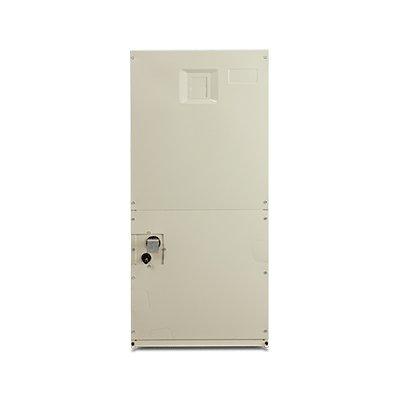In industrial cooling towers made of galvanized steel, passivation is an electrochemical process that slows or prevents possible corrosion of the metal from which the units are made.
Rust that occurs on the cooling towers during the first period of use, called "white rust", is preventable by pre-treading the metal surface of the cooling tower.
Galvanized steel in industrial cooling towers
In the air conditioning(HVAC) market, galvanized steel is, to date, the main material used for shop-assembled cooling towers and evaporative condensers.
Despite the growing trend in the use of alternative materials for the construction of cooling towers assembled, such as fiberglass, plastic, and stainless steel or hybrids, galvanized steel remains the most common and cost-effective choice to date; moreover, if properly maintained, it ensures 20 or more years of useful life for the systems.
Cause and impact of premature corrosion
It is precisely the lack of proper maintenance that can lead to a premature onset of corrosion
However, it is precisely the lack of proper maintenance, especially during the first few months of use of the equipment, that can lead to a premature onset of corrosion: the so-called "White Rust".
This corrosion can occur within a year or two of the start-up of the cooling tower and can significantly reduce the life expectancy of the tower.
What is white rust?
In industrial cooling towers built with galvanized steel, white rust is a localized corrosion attack that occurs rapidly and usually appears as a voluminous white deposit. This rapid corrosion can completely remove the zinc in a localized area of the cooling tower resulting in reduced equipment life.
Underneath the white deposit, a localized area is usually visible, indicating where the zinc has been attacked, and it is usual to initially appear as a surface crater.
An inspection activity
Generally, white rust is more likely to appear on newly commissioned equipment.
Therefore, during the initial weeks of commissioning the cooling tower, in which the zinc is exposed to water, an inspection activity should be carried out and, if necessary, a pretreatment that will lead to the passivation of the surface.
Variable consistency of corrosion
White rust attack can occur even on old zinc, particularly when the surface is exposed to high pH
It is also true that white rust attack can occur even on old zinc, particularly when the surface is exposed to high pH, the water has very high conductivity, or in cases where the old surface has been damaged externally.
The consistency of corrosion generally varies: when the white rust deposit is kept wet, it is usually waxy to the touch; however, when the corrosion product dries, it usually becomes hard and brittle.
How to avoid white rust: passivation
To prevent white rust and thus ensure the longest possible service life for your galvanized steel industrial cooling tower, it is advisable to provide adequate water treatment to ensure the passivation of surfaces during the initial stages.
Initially, the zinc coating must be allowed to develop a natural non-porous layer of "basic zinc carbonate." This natural chemical barrier prevents further rapid corrosion of the zinc coating by the environment or due to normal cooling tower operation.
Zinc carbonate barrier
It should be borne in mind that the basic zinc carbonate barrier forms on the galvanized surfaces within eight weeks from the start of operation of the cooling tower with water of neutral pH (6.5-8.0), calcium hardness of 100-300 ppm (as CaCO3), and alkalinity of 100-300 ppm (as CaCO3).
It is therefore very important to allow this to form on the galvanized surfaces of the tower to resist white rust corrosion as much as possible. (It will be clear that the initial operation of the cooling tower can significantly influence its service life).
pH
Decsa strongly recommends that initial operations be done with a pH close to neutral
Decsa strongly recommends that initial operations be done with a pH close to neutral and with moderate use of inhibitors for biofilm formation. Many water treatment companies suggest treatment with corrosion inhibitors of the phosphate/polymer/phosphonate type, which are effective in preventing the formation of white rust on galvanized steel.
Before starting any operation with the new tower, it is also important to verify that a water treatment company has chosen a suitable program for galvanized steel cooling tower.
DECSA recommendations for the selection of materials
DECSA, as standard for its cooling towers, uses hot-dip galvanized steel Z-725 panels. These sheets, with a coating weight of 725 g/m2 and a thickness of 50.5 µm, have a quality among the most available on the market and were specially chosen to limit the phenomenon of white rust.
Realizing that HDGS panels alone may not be the best choice for every type of water or environment, we have thus introduced a variety of material and finish options for our cooling towers, starting from the" DecsaCoating Plus" coating to the complete SS316 execution.





















